Anglicanism
 From Nwe
From Nwe 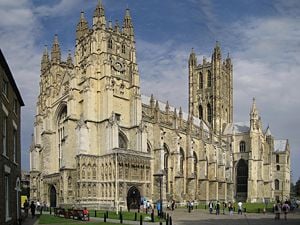
Anglicanism (from Anglia, the Latin name for England) describes the Christian denominations that follow the religious traditions developed by the established Church of England.
Anglicanism has its roots in the Celtic Christianity of the earliest Britons and in the Roman Catholic form of the faith brought to England by Augustine of Canterbury in the fifth and sixth centuries. The Norman conquest of 1066 opened up English churches to European influence. Pressure for church reform, growing English dissatisfaction with papal authority, and Henry VIII’s desire for a divorce from Catherine of Aragon were factors contributing to England’s eventual break with Rome. From 1536-1539, Henry VIII renounced papal jurisdiction in England and a national church was created with a Calvinistic doctrinal basis, formulated in 1562 as the 39 Articles of Religion.
Anglicanism has two broad traditions: Evangelical and Anglo-Catholic. It is often seen as a bridge between Protestantism, Roman Catholicism, and Orthodoxy. Adherents within the Anglican Communion worldwide number around 70 million. However there are numerous other denominations which consider themselves Anglican.
Anglicanism today operates flexibly and autonomously in many nations. It claims to be both Catholic and Reformed: Catholic in its order of ministry, but with a conservatively reformed liturgy outlined in the Book of Common Prayer. Anglicans are predominantly English-speaking, although congregation sizes are declining in the United Kingdom.
Origins
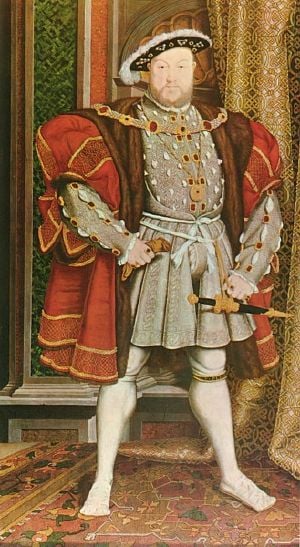
While Anglicans acknowledge that the schism from papal authority under Henry VIII of England led to the Church of England existing as a separate entity, they also stress its continuity with the pre-Reformation Church of England. The organizational machinery of this church was in place by the time of the Synod of Hertford in 672-673 C.E. when the English bishops were for the first time able to act as one body under the leadership of the Archbishop of Canterbury.
Since the Elizabethan Religious Settlement the Church of England has enjoyed a heritage that is both "Catholic" and "Protestant" with the British monarch as its supreme governor. However, the British monarch is not the constitutional "Head" of the Church of England. The monarch has no constitutional role in Anglican churches in other parts of the world, although prayers in these churches are often often on her behalf.
The English Reformation was initially driven by the dynastic goals of Henry VIII of England, who, in his quest for a male heir, determined replace the authority of the papacy with the English crown in ecclesiastical affairs. The Act of Supremacy put Henry at the head of the church in 1534, while acts such as the Dissolution of the Monasteries put huge amounts of church land and property into the hands of the Crown and ultimately into those of the English nobility.
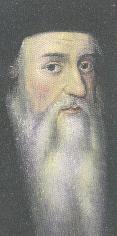
The theological justification for Anglican distinctiveness was begun by the Archbishop of Canterbury Thomas Cranmer and continued by other thinkers such as Richard Hooker and Lancelot Andrewes. Cranmer had studied in Europe and was influenced by the ideas of the Reformation. He himself had also married despite being a priest. Because Cranmer and other leaders of the Church of England had been duly ordained by previous bishops, Anglicans consider that they have retained the historic apostolic succession.
During the short reign of Henry's son Edward VI, Cranmer was able to move the Church of England significantly towards a more Protestant Calvinist position. The first Book of Common Prayer dates from this period. This reform was reversed abruptly in the subsequent reign of the Catholic Queen Mary. Only under Queen Elizabeth I was the English church finally established as a "reformed Catholic Church" that was accepting of Calvinistic and Evangelical theology.
Elizabeth's solution to the problem of minimizing bloodshed over religion was a religious settlement which prescribed a fixed, sparer form of worship, in the vernacular, in which everyone was expected to take part, i.e. common prayer. In addition, a belief system was formulated to allow people with different understandings of what the Bible taught to give their assent. The Protestant principle that all things must be proved by scripture was endorsed in article VI of the Thirty-nine Articles. The bulk of the population was willing to go along with Elizabeth's religious settlement, but some at both ends of the theological spectrum would have nothing to do with it, and cracks in the façade of religious unity in England were appearing.
For the next century there were significant swings back and forth between the Puritans and those with a less Reformed understanding of Anglicanism. Among the many casualties, besides a large number of commoners and nobles alike, were a king (Charles I) and an Archbishop of Canterbury (William Laud). The final outcome in 1660 after the Restoration of Charles II was not too far removed from the Elizabethan ideal. One difference was that the ideal of encompassing all the people of England in one religious organization, taken for granted by the Tudors, had to be abandoned. The religious landscape of England assumed its present form, with an Anglican established church occupying the middle ground, and the two extremes, Roman Catholic and dissenting Puritans, having to continue their existence outside the national church. The English Reformation may be said to have ended at this point.
Leadership
The Archbishop of Canterbury has a precedence of honor over the other archbishops of the Anglican Communion. He is recognized as primus inter pares, or first among equals. The archbishop, however, does not exercise direct authority in the provinces outside England. Since the reign of Henry VIII ultimate authority in the Church of England has been vested in the reigning monarch. Since the time of Elizabeth I, the sovereign's title has been 'supreme governor' rather than 'head' of the Church of England. In practice, this means that the monarch has the responsibility of seeing that the administrative machinery of the church is running smoothly, and in particular that new bishops are appointed when needed. Today, this responsibility is discharged by the Prime Minister. Anglican churches outside England do not have this relationship with the British monarch.
Churches
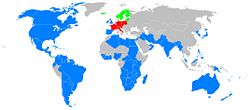
Anglicanism is most commonly identified with the established Church of England, but Anglican churches exist in most parts of the world. In some countries (e.g., the United States and Scotland) the Anglican church is known as Episcopal, from the Latin episcopus, "bishop." Some Anglican churches are not in communion with the Archbishop of Canterbury but consider themselves Anglican because they retain practices of the Church of England and the Book of Common Prayer.
Each national church or province is headed by a primate called a primus in the Scottish Episcopal Church, an archbishop in most countries, a presiding bishop in the Episcopal Church USA and a prime bishop in the Philippine Episcopal Church. These churches are divided into a number of dioceses, usually corresponding to state or metropolitan divisions.
There are three orders of the ordained ministry in Aglican tradition: deacon, priest, and bishop. No requirement is made for clerical celibacy and women may be ordained as deacons in almost all provinces, as priests in some, and as bishops in a few provinces. Religious orders of monks, brothers, sisters, and nuns were suppressed in England during the Reformation, but made a reappearance in Victorian times and do exist today.
Those Anglican churches "in communion" with the See of Canterbury constitute the Anglican Communion, a formal organization made up of churches at the national level. However, there are a large number of denominations which call themselves Anglican that are known as the "continuing church" movement and do not acknowledge the Anglican Communion.
However, some are at the Evangelical end of the spectrum—such as the Church of England in South Africa and the Reformed Episcopal Church—consider the Church of England and the Episcopal Church in the United States of America, as well as some other member churches of the Anglican Communion, to have departed from the historic faith by ordaining women, by ordaining openly gay people, by altering the theological emphases of the 1928 Book of Common Prayer, and by loosening the Church's traditional regulations concerning sexual and marital matters.
In the Indian subcontinent, Anglican churches have entered into formal union with evangelical Protestant denominations while remaining part of the Anglican Communion and bringing their Presbyterian and other historically non-Anglican fellows along with them. As a percentage of the total population these united churches are not significant, but numerically they are very substantial. Such organizations include, the Church of North India, Church of South India, Church of Pakistan, and Church of Bangladesh.
Doctrine
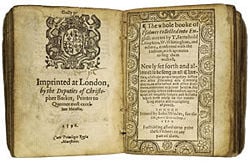
Historically, Anglicans have regarded the Bible, the three Creeds (Nicene Creed, Apostles' Creed, Athanasian Creed), the Thirty-Nine Articles of Religion, and the Book of Common Prayer (1662) as the principal norms of doctrine. Thus, some have said that the Anglican Church retains much of the liturgy of the Roman Catholic Church, but is tolerant of Reformed doctrine. This state of affairs is a consequence of the Elizabethan Religious Settlement. The traditional liturgy of Anglicanism, the 1662 Book of Common Prayer, has been considered "too Catholic" by those of Puritan leanings in the sixteenth century and Evangelicals in later periods, and "too Evangelical" by those of Anglo-Catholic leanings.
This distinction is routinely a matter of debate both within specific Anglican Churches and throughout the Anglican Communion by members themselves. Since the Oxford Movement of the mid-nineteenth century, many churches of the Communion have embraced and extended liturgical and pastoral practices dissimilar with most Reformed Protestant theology. This extends beyond the ceremony of High Church services to even more theologically significant territory. Some Anglican clergy practice all seven of the sacraments in a marked way, in departure from the teaching of early Protestant thinkers like John Calvin and Martin Luther, even though opinions vary about the best way to understand these "sacramental rites." For example, some Anglican clergy will hear private confessions from their parishioners, a practice widely discontinued in Protestant denominations. Nevertheless, while Anglo-Catholic practices, particularly liturgical ones, have become much more mainstream within the denomination over the last century, there remain many areas where practices and beliefs remain on the more Protestant or Evangelical side of the debate.
Churchmanship
Anglicanism has always been characterized by diversity in theology and the ceremonial (or lack thereof) of the liturgy. Different individuals, groups, parishes, dioceses, and national churches may identify more with Catholic traditions and theology or, alternatively, with the principles of Evangelicalism.
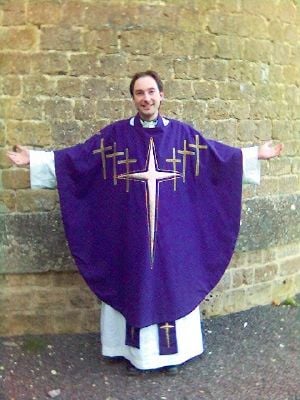
Some Anglicans follow such devotional practices common among Roman Catholics as solemn benediction of the reserved sacrament, use of the rosary, or of anglican prayer beads, and prayer to the departed saints, which is contrary to the teaching of some of the English Reformers. Some give greater weight to the deuterocanonical books of the Bible. Officially, Anglican teaching is that these books may be read in church for their instruction in morals, but not used to establish any doctrine.
For their part, those Anglicans who emphasize the Reformed-Protestant nature of the Church stress the Reformation themes of salvation by grace through faith and Scripture as containing all that is necessary to salvation in an explicit sense.
The range of Anglican belief and practice became particularly divisive during the nineteenth century, as the Anglo-Catholic and Evangelical movements emphasized the more Catholic or the more Reformed sides of Anglican Christianity. These groups, or "parties," are still often equated with the terms "High Church" and "Low Church," and these terms are commonly used to speak of the level of ceremony that is favored. These terms are also used to discuss the theological place of the organized church within the Body of Christ.
The spectrum of Anglican beliefs and practice is too large to be fit into these labels. Most Anglicans are broadly Evangelical and Catholic and, in fact, stress that Anglicanism, rightly understood, is western Christianity's "Via Media" (middle way) between what were considered medieval "excesses" of Roman Catholicism and the "excesses" of the fervent European Continental Protestantism, represented strongly by Geneva. Via Media may also be understood as underscoring Anglicanism's preference for a communitarian and methodological approach to theological issues rather than either total relativism on the one hand or dogmatic absolutism on the other.
The nineteenth century saw new heights of intellectual activity in the Anglican Church. Since that time, the theological contributions of the Church to the wider spectrum of Christian thought have declined somewhat, though there is some resurgence on Anglicanism's theological left.
Another recent trend has been the emergence of fundamentalism in some strands of Anglicanism. This controversial doctrine is regarded by most as highly divisive, rejecting all prior tradition and is seen by its critics as a reactionary measure by those who cannot cope with the relativization of truth that has been a predominant feature of the post-modernist epoch. Traditionally, Anglicanism had been associated with the English university systems and hence, the literary criticism produced in those organizations has been applied to the study of ancient scriptures, although not uncritically.
Social issues
A question of whether or not Christianity is a pacifist religion has remained a matter of debate for Anglicans. In 1937, the Anglican Pacifist Fellowship emerged as a distinct reform organization, seeking to make pacifism a clearly defined part of Anglican theology. The group rapidly gained popularity among Anglican intellectuals, including Vera Brittain, Evelyn Underhill, and former British political leader George Lansbury.
While never actively endorsed by the Anglican Church, many Anglicans unofficially have adopted the Augustinian "Just War" doctrine. The Anglican Pacifist Fellowship remain highly active and rejects this doctrine. The Fellowship seeks to reform the Church by reintroducing the pacifism inherent in the beliefs of many of the earliest Christians and present in their interpretation of Christ's Sermon on the Mount. Greatly confusing the matter was the fact that the 37th Article of Religion states clearly that "it is lawful for Christian men, at the commandment of the Magistrate, to wear weapons, and serve in the wars."
The Lambeth Council in the modern era has sought to provide a clearer position by repudiating modern war and developed a statement that has been affirmed at each subsequent meeting of the Council. This statement was also strongly reasserted when the 67th General Convention of the Episcopal Church reaffirms the statement made by the Anglican Bishops assembled at Lambeth in 1978 and adopted by the 66th General Convention of the Episcopal Church in 1979, calling:
“Christian people everywhere... to engage themselves in non-violent action for justice and peace and to support others so engaged, recognizing that such action will be controversial and may be personally very costly... this General Convention, in obedience to this call, urges all members of this Church to support by prayer and by such other means as they deem appropriate, those who engaged in such non-violent action, and particularly those who suffer for conscience' sake as a result; and be it further Resolved, that this General Convention calls upon all members of this Church seriously to consider the implications for their own lives of this call to resist war and work for peace for their own lives."
Religious life
A small yet influential aspect of Anglicanism is its religious orders of monks and nuns. Shortly after the beginning of the revival of the Catholic Movement in the Church of England, there was felt to be a need for some Anglican Sisters of Charity. In the 1840s, Mother Priscilla Lydia Sellon became the first woman to take the vows of religion in communion with the Province of Canterbury since the Reformation. Following this act, a series of letters were exchanged publicly between her and the Rev. James Spurrell, Vicar of Great Shelford, Cambs., who criticized Sellon's Sisters of Mercy. From the 1840s and throughout the next hundred years, religious orders for both men and women proliferated in the UK, the United States, Canada, and India, as well as in various countries of Africa, Asia, and the Pacific.
Anglican religious life at one time boasted hundreds of orders and communities, and thousands of religious adherents. An important aspect of Anglican religious life is that most communities of both men and women lived their lives consecrated to God under the vows of poverty, chastity, and obedience by practicing a mixed life of reciting the full eight services of the Breviary in choir, along with a daily Eucharist, plus service to the poor. The mixed life, combining aspects of the contemplative orders and the active orders, remains to this day a hallmark of Anglican religious life.
Since the 1960s, there has been a sharp falling off in the numbers of religious in most parts of the Anglican Communion, just as in the Roman Catholic Church. Many once large and international communities have been reduced to a single convent or monastery comprised of elderly men or women. In the last few decades of the twentieth century, novices have for most communities been few and far between. Some orders and communities have already become extinct.
There are however, still several thousand Anglican religious working today in approximately 200 communities around the world.
References
ISBN links support NWE through referral fees
- Doe, Norman. Canon Law in the Anglican Communion: A Worldwide Perspective. Oxford: Clarendon Press, 1998. ISBN 0198267827
- Hein, David (compiler). Readings in Anglican Spirituality. Cincinnati: Forward Movement Publications, 1991. ISBN 0880281251
- Sachs, William L. The Transformation of Anglicanism: From State Church to Global Community. Cambridge: Cambridge University Press, 1993. ISBN 9780521526616
- Sykes, Stephen, John Booty, and Jonathan Knight (eds.). The Study of Anglicanism. Minneapolis, MN: Fortress Press, 1993. ISBN 9780800620875
External links
All links retrieved June 19, 2021.
- Anglican Communion – The official site of the Anglican Communion. www.anglicancommunion.org
- An unofficial site of the Anglican Communion – One of the biggest resources of Anglicanism in the world. www.anglicansonline.org
- Anglican historical texts – justus.anglican.org
Credits
New World Encyclopedia writers and editors rewrote and completed the Wikipedia article in accordance with New World Encyclopedia standards. This article abides by terms of the Creative Commons CC-by-sa 3.0 License (CC-by-sa), which may be used and disseminated with proper attribution. Credit is due under the terms of this license that can reference both the New World Encyclopedia contributors and the selfless volunteer contributors of the Wikimedia Foundation. To cite this article click here for a list of acceptable citing formats.The history of earlier contributions by wikipedians is accessible to researchers here:
- Anglicanism history
The history of this article since it was imported to New World Encyclopedia:
- History of "Anglicanism"
Note: Some restrictions may apply to use of individual images which are separately licensed.
↧ Download as ZWI file | Last modified: 02/03/2023 22:58:27 | 268 views
☰ Source: https://www.newworldencyclopedia.org/entry/Anglican_church | License: CC BY-SA 3.0
 ZWI signed:
ZWI signed: KSF
KSF